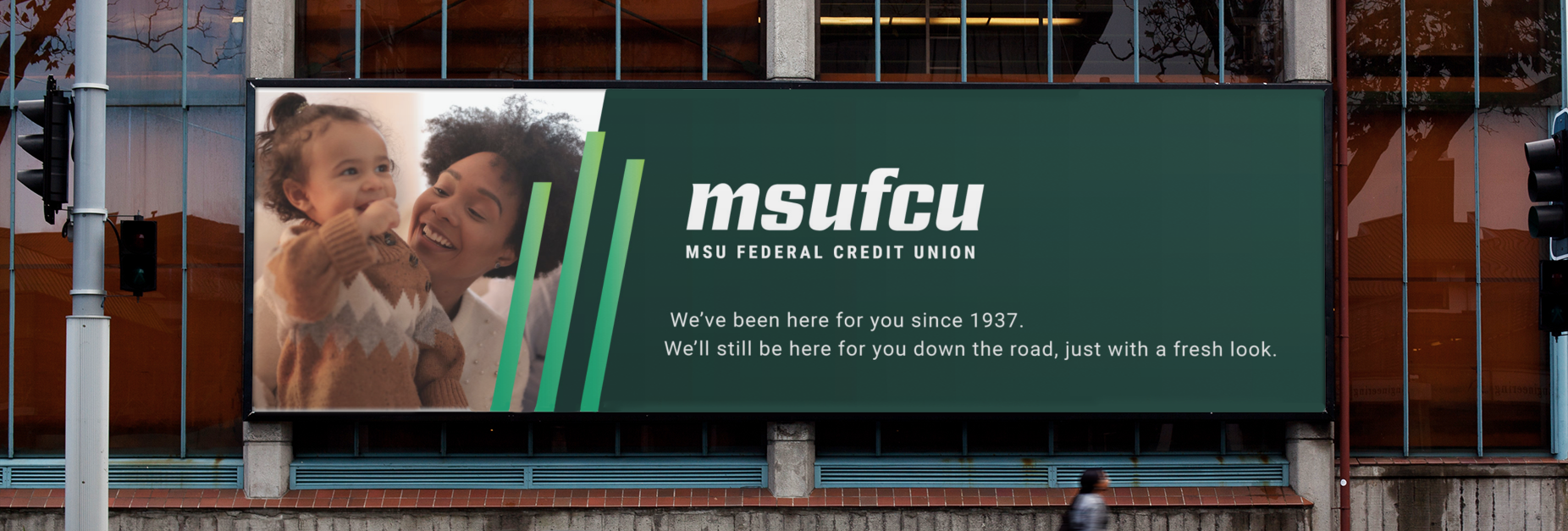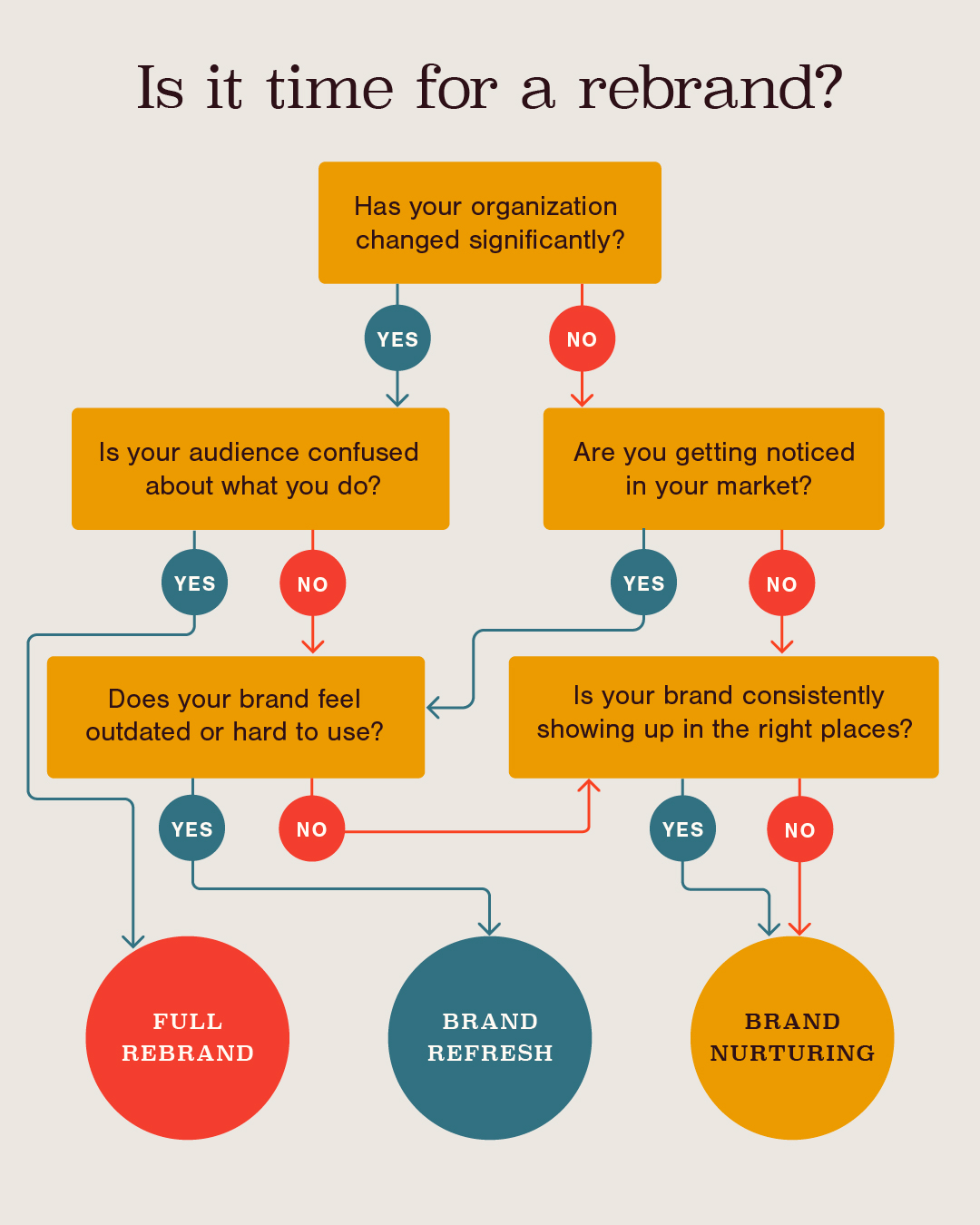When Is It Time For A Rebrand?

Your brand is your identity. When you’ve been living, breathing, and presenting your brand for years, you have the benefit of knowing it inside and out; but you also might be the last to notice when it’s no longer working for you.
We know, change is difficult. People are often drawn to the familiar, tried-and-true solutions. But to keep up with the pace of business, remember to take a step back and evaluate: Is our brand still working for us?
It’s a question many people don’t want to ask — and the numbers show that, often, they don’t. Only 10-20% of marketing budgets are spent on branding and rebranding by most companies, revealing that this is a component that often gets put on the back burner to make space for the instant gratification of direct promotion (McKinsey & Company, 2023). But this lack of dedication to ensuring a strong brand is at the foundation can lead to issues down the road.
We’ll take it upon ourselves to be that trusted albeit overly honest friend who asks the difficult questions. These five ideas can help you decide whether your organization may need brand development, a brand refresh, or brand nurturing, and understand what each of those entails.
1. Has your organization changed?
One of the clearest signs it might be time for a rebrand is internal change. Maybe you’ve expanded your services. Maybe your mission evolved. Maybe you’ve merged with another organization, changed leadership, or reached a new stage of growth. If your brand no longer reflects who you are today, you’re likely due for a more foundational overhaul.
This is the heart of brand development: the full reimagination of your identity — from messaging to visuals to strategic positioning. It’s not just about changing your look; it’s about realigning your brand with your purpose.
A new name, tagline, color palette, voice, or visual identity may be on the table. Why? Because a misaligned brand causes confusion. And confused people don’t engage. Consistent brand presentation across platforms increases revenue by up to 23% (Forbes, 2022). That’s a good argument for doing the foundational work — and doing it right.
2. Is your audience confused about what you do or what you stand for?
Even years after a new business or brand has launched, we sometimes see that its audiences still aren’t grasping what the organization actually does. There are a handful of signs that this may be the case:
- You’re constantly having to “explain” your business
- You’re getting inquiries for services you don’t offer
- People (including your internal team) describe your business in vague or inaccurate terms
- You hear “Oh, I didn’t know you did that!” all too often
If this is you, admitting it is the first step. Yes, you may think you put so much into that brand a couple years ago when you first launched that you can’t go back now. But if you know it’s not serving you well, avoid the sunk cost fallacy and make the change. In this case, it’s time for a full rebrand.
3. Is your audience not noticing you anymore?
Maybe your organization has remained consistent. So consistent, in fact, that you’re not standing out to audiences and are outshined by your competitors. In this case, it may not necessarily be time to start from scratch, but it is time to evolve.
Welcome to the world of the brand refresh. Think of this as a tune-up, not a total engine replacement. A refresh might involve:
- Updating your tone of voice to better reflect your culture
- Revising your brand messaging to be more audience-centric
- Evolving your color palette, fonts, or photography style
- Revamping how your brand shows up on your website and social media
And, yes: You can absolutely refresh a brand without changing your logo. Logos are just one part of a larger brand system. In fact, many of the most successful brand refreshes leave the logo untouched and instead focus on how the brand feels across platforms and touchpoints.
4. Does your identity feel outdated, misaligned with trends, or hard to use across platforms?
Functionality is a core component of an effective brand. Your image needs to be able to apply to the current environments in which it exists; from broader, cultural and political trends, to the day-to-day processes within your workplace.
Depending on the scale of functionality issues, you may be a candidate for a full rebrand, or at least a brand refresh. To figure out which, we recommend working backward by identifying the specific pieces of your brand that aren’t functioning properly (visual, tonal, accessibility-related, etc.), and answering whether changing each of those components would alter the broader brand as a whole. Like many projects, you may find yourself down a rabbit hole of changes that need to be made. That’s okay! It just means it may be time to start fresh.
5. Are you consistently using your brand effectively, and is it showing up in the right places?
If so, you may not need to change your brand — but you need to nurture it. Brand nurturing is all about proactively investing in strategy, marketing, and activation to help your existing brand do more heavy lifting. This includes:
- Building brand awareness through active, timely campaigns
- Activating your brand on new platforms and constantly evolving
- Training staff or partners on how to use the brand correctly
- Engaging in storytelling that reinforces your mission and values
Here, it’s not about changing the brand; it’s about using it to its full potential. This requires regular evaluation of new channels and experiences that can help you stand out. After all, 60% of millennials expect consistent experiences across platforms — from websites to in-person interactions (Salesforce, State of the Connected Customer, 2023). Even if your brand is on point, you need to maintain these consistent, cross-platform experiences to keep audiences engaged.

Every brand needs care and maintenance.
The bottom line? Even if you don’t need a full rebrand, your brand likely needs attention. Refinement, strategy, storytelling, and regular tune-ups are essential. Start by making a plan to regularly evaluate your brand annually (or quarterly, if you’re a go-getter).
Brand identity is not a one-and-done project; it’s a living system that should evolve with your organization and the world around you. When done thoughtfully, even small changes can have a powerful ripple effect on your visibility, clarity, and impact.
